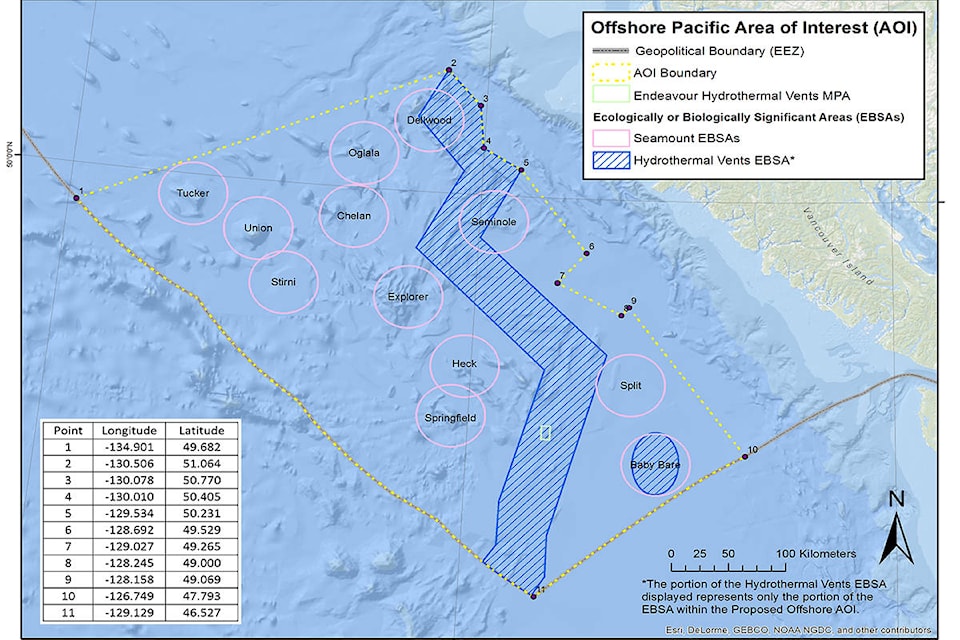The Department of Fisheries and Oceans is looking to protect a large offshore area of ocean adjacent to Vancouver Island.
Alice Cheung, Oceans Program Regional Manager for DFO gave a presentation on Canada’s Marine Conservation Target’s initiative, where she addressed the proposed Marine Protected Area (MPA) at the Regional District of Mount Waddington’s (RDMW) board meeting on Nov.21.
“My purpose here is to communicate how Fisheries and Oceans intends to meet Canada’s commitment,” said Cheung, adding she would discuss “what it actually looks like in the Pacific region and to seek your input as we move forward in the agenda.”
In 2015 the Government of Canada agreed to increase the marine coastal areas that are protected to 5 percent by 2017, which has already been reached, and 10 percent by 2020.
The Offshore Pacific Area of Interest (AOI) adjacent to Vancouver Island has an area of approximately 140,000 km2 and was identified as an area of ecological importance because it contains 13 seamounts (underwater mountains) and multiple kilometers of hydrothermal vents.
“Why they are important is because they provide habitat for many species,” said Cheung. She noted the human activity in the AOI includes fishing, cable laying, marine transportation, sovereignty patrols, Department of National Defence activity, scientific research, and seismic surveys.
At its closest point, the AOI is approximately 80 km from the west coast of Vancouver Island, but on average is 100-150 km off the coast and extends south to the Canada-United States border.
Cheung said fishing activities in the area are very limited. “We have to think about how far offshore this is - it is not economically viable to go all the way out there,” she said adding that there was Sable fishing in two of the seamounts, but in very limited quotas.
“What is a more active fishery is the tuna fishery,” she explained, adding that the closure they are putting into place won’t affect the estimated $1.24 million tuna fishery in the AOI because tuna is a midwater species and not a groundwater species.
“An MPA doesn’t mean full on closures,” she said. “What we are trying to protect here is bottom contact features.”
Cheung said since it takes roughly seven to ten years to establish an Oceans Act MPA, often the government will use a Fisheries Act closure to protect an area in the interim, which was what was put in place for the 13 seamounts in the AOI.
“For the fisheries act closure the conversations did happen in the spring,” said Cheung, adding and that they consulted with a variety of stakeholders.
“We brought them into the room to communicate the long-term interest to put in an MPA, but we also flagged that we can’t wait for 7 to 10 years for that to happen, so we wanted to put in a fisheries act closure to put in that interim protection.”
As the process moves forward DFO will finalize the conservation objectives, determine the appropriate site boundaries and develop a management approach for the proposed MPA in consultation with partners and stakeholders.
Discussions regarding the MPA have been underway since the spring, with RDMW board member and Malcolm Island Representative Heidi Soltau attending the meetings.
“I believe there are four or five seats offered to the regional districts to continue engaging in this and we welcome participation as you see fit,” said Cheung.
“I know this board was quite concerned with the offshore consultation process when they were looking for one representative from the entire Island so I am really glad to see that flexibility and that you took representatives from the regional districts,” said RDMW Chair Andrew Hory.
